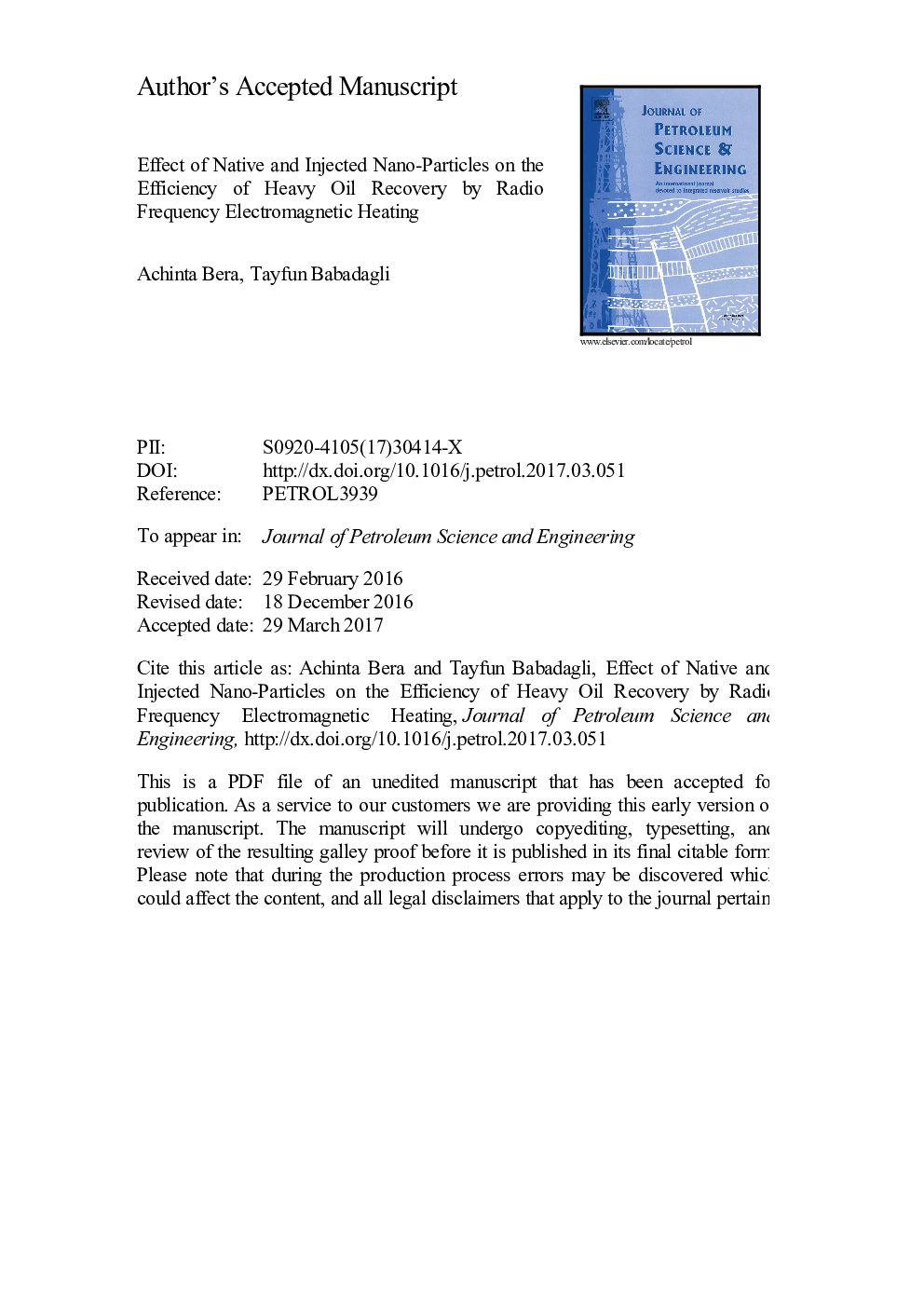| Article ID | Journal | Published Year | Pages | File Type |
|---|---|---|---|---|
| 5484428 | Journal of Petroleum Science and Engineering | 2017 | 31 Pages |
Abstract
Previous attempts of EM heating have been made on the estimation of reservoir heating capabilities through numerical or analytical modeling. Experimental efforts, however, are needed, especially to test the oil property changes under EM radiation, temperature rise profile, and its effects on oil recovery. In this study, we introduced a conceptually scaled model (125Ã50Ã40 cm) filled with sand to investigate the feasibility of EM heating for heavy oil recovery. For this purpose, a microwave antenna with a frequency of 2.45 GHz and 2 kW Magnetron based power generator was used to obtain the EM waves. Temperatures at different distances from the antenna were measured by fiber optic temperature sensors. Oil recovery experiments were conducted by placing the oil saturated sand samples in Buchner funnels at different distances from the antenna. The effect of temperature on viscosity of crude oil before and after exposure of EM radiation was also examined through the oil samples in Buchner funnels located in the model. The produced gases and oil collected were analyzed through GC to ensure the loss of component from the original oil and upgradation study. The experiments were repeated using Ni and Fe nanoparticles with oil and silica bead mixture, which can absorb EM waves. They improved the efficiency of the methods yielding a faster heating and thereby a quicker viscosity reduction. Finally, the experiments were repeated with high clay contents representing shale reservoirs. The recoveries and the change in oil properties were correlated to the power of the EM source and distance from this antenna. Temperature was raised by Ni nanoparticles (up to ~200 °C) and therefore higher oil recovery (~30% of OOIP) was also obtained with Ni nanoparticles. Experimental observations and quantitative analyses could provide a vision for further development of EM heating as an alternative for situations where aqueous heating is not feasible.
Related Topics
Physical Sciences and Engineering
Earth and Planetary Sciences
Economic Geology
Authors
Achinta Bera, Tayfun Babadagli,
